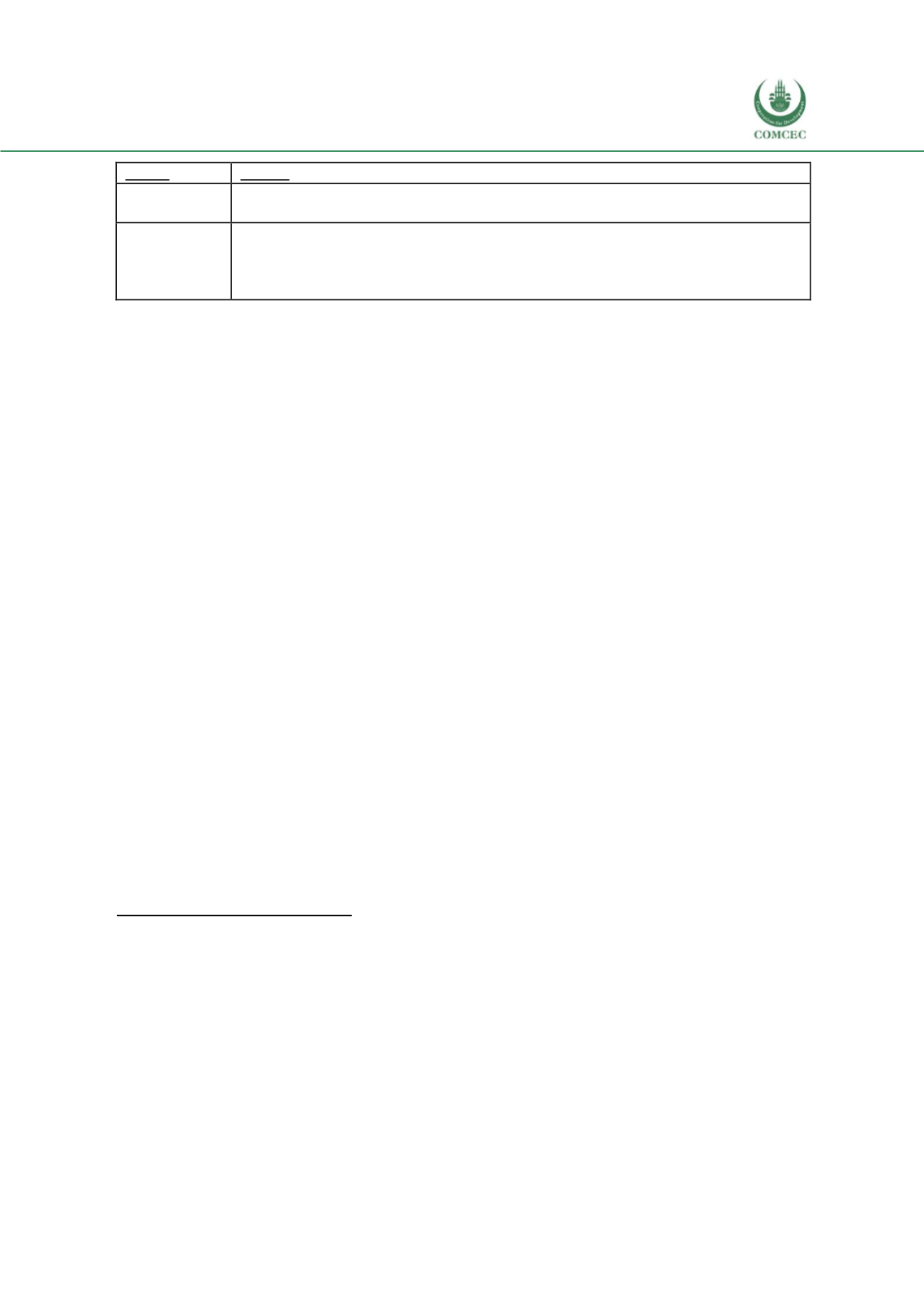

Increasing the Resilience of the Food Systems
In Islamic States in Face of Future Food Crises
87
Group
Impact
acceptable diet. There is a 28%
356
prevalence of diarrhea among children aged 6
to 11 months and 23%
357
among children aged 12 to 23 months.
Small Holders Most of the smallholders deploy hand tools for cultivation, as they lack quality
seeds, fertilizers, or automation.
358
They are very dependent on food purchases
once their stores run out, and many rural smallholders also lack formal financial
support.
Identifying Food Security Vulnerabilities in Niger
The Nigerien food ecosystem faces multiples vulnerabilities triggered by weather and
production shocks, large household sizes, poverty, and lack of education. Access to water is the
government’s key priority, as 80% of Niger’s population is rural and agriculture-dependent.
Niger has less renewablewater resources than most countries in West Africa, and these remain
largely underexploited. Furthermore, the population is dense in the Sahelian zone, which
receives 150 to 600
359
mm of rain annually, leaving rain-fed agriculture vulnerable to climatic
variations.
Climate projections suggest that rainfall will become even more unpredictable. This could have
serious repercussions for food security in Niger. Global weather variationswill have a significant
effect on the frequency and intensity of droughts, and average temperatures in the Sahel zone
are expected to rise.
Niger has the world's highest birth rate, with a fertility rate of 7.8
360
children per woman. In
2017, the population was close to 21 million, with a 4% growth rate.
361
Widespread early
marriage and pregnancy has led to a cycle of malnutrition, further worsened by inadequate care
for mothers and children.
Production shocks such as disease and crop and livestock pests also endanger food security.
362
Poverty has been a longstanding driver of food insecurity in Niger. In 2014, an estimated 45.7%
of Niger’s population was poor; this is down significantly from 81.4% in 1994 and 50.3% in
2011.
363
Yet, despite its decline, poverty still remains prevalent, especially in rural zones.
According to the RISE midline assessment, 76% of households in the RISE zone survive on
356
EDHS 2012
357
Ibid
358
USAID. (2017).
USAID Office of Food for PeaceFood Security Desk Review for Niger
. Retrieved from:
https://www.usaid.gov/sites/default/files/documents/1866/FFP-Niger-Food-Security-Desk-Review-Oct2017.pdf359
Feed The Future. (2018).
Global Food Security Strategy (GFSS) Niger Country Plan
. Retrieved from:
https://www.usaid.gov/sites/default/files/documents/1867/Niger_Country_Plan_Final_Public_Scrub_Clean_WSEdits_8.13.pdf
360
Feed The Future. (2018).
Global Food Security Strategy (GFSS) Niger Country Plan
. Retrieved from:
https://www.usaid.gov/sites/default/files/documents/1867/Niger_Country_Plan_Final_Public_Scrub_Clean_WSEdits_8.13.pdf
361
Ibid
362
USAID. (2017).
USAID Office of Food for PeaceFood Security Desk Review for Niger
. Retrieved from:
https://www.usaid.gov/sites/default/files/documents/1866/FFP-Niger-Food-Security-Desk-Review-Oct2017.pdf363
World Bank 2016
















